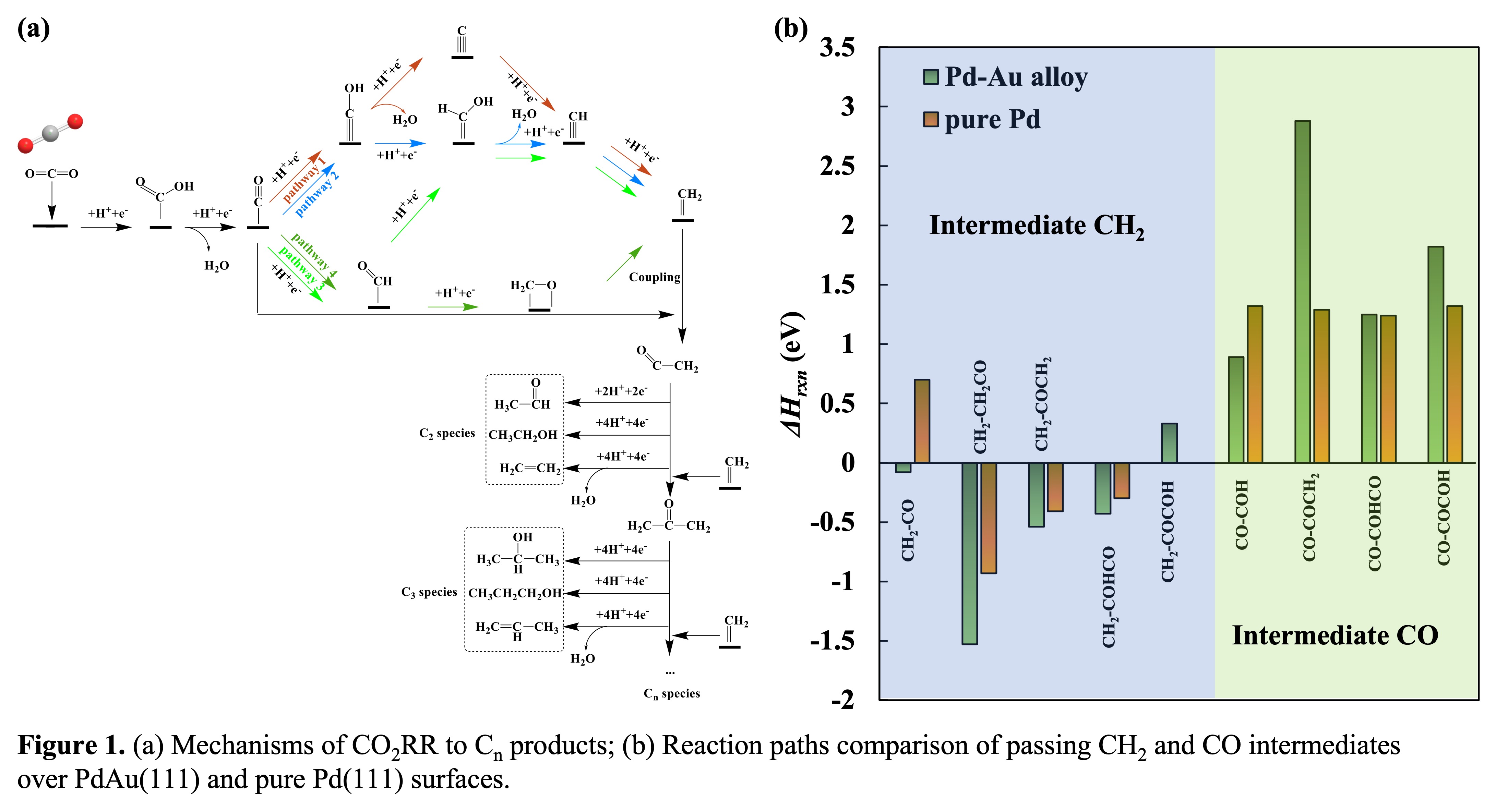Breadcrumb
- Home
- Publications
- Proceedings
- 2023 AIChE Annual Meeting
- Catalysis and Reaction Engineering Division
- Reaction Path Analysis
- (702f) Investigation of Liquid Fuel Generation from Carbon Dioxide over Bimetallic Systems

According to previous work about long-chain hydrocarbons formation,1 the alloy system with palladium and gold presents excellent catalysis performance for C3-C5 products with CO2RR. We then designed a PdAu bimetallic catalyst (Figure 1a) as a study case and explored the mechanism of CO2RR-to-C3+ via a combination of machine learning, density functional theory (DFT) and microkinetic modeling.3 In particular, our results show that Cn-CH2 coupling is more energetically favorable than Cn-CO. This further confirmed our hypothesis that to generate C3+ fuels, the reaction mechanism is a Ficher-Tropsch-like synthesis which passes by the key intermediate CH2. The reaction energetics could be further promoted at the Pd-Au interfacial site as compared to the pure Pd or Au sites. For the future work, we will design a deep active learning algorithm to auto-generate and auto-select bimetallic interface sites for CO2RR to long-chain hydrocarbon fuel generation. This theoretical research provides an innovative reaction mechanism, i.e., CH2 insertion, for bimetallic system based CO2RR to long-chain hydrocarbons (C3+). This work would further integrate energy storage of renewable electricity with the grid, enable storage for intermittent power, and would advance goals of net-zero carbon fuels.